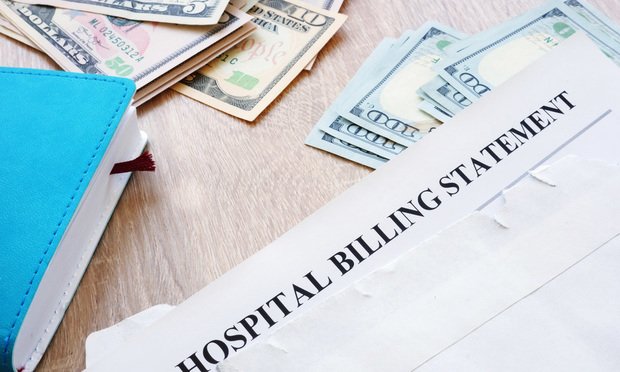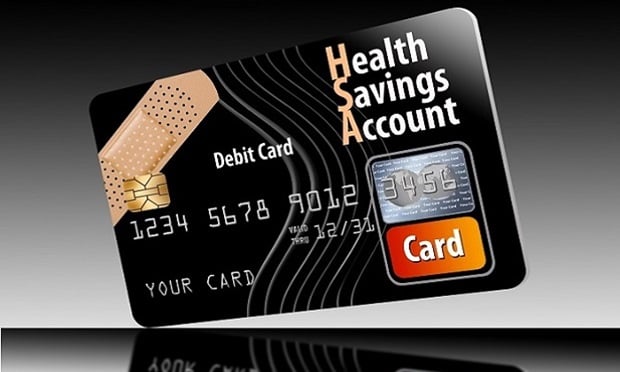We've all seen the numbers: Health savings accounts just keep growing.
The still relatively new health savings vehicle has now grown to an estimated $18.1 billion in assets representing more than 9.1 million accounts. That's a 29 percent increase in both accounts and assets in just one year, according to research from investment consulting firm Devenir.
Devenir said the average account balance continues gradual growth. The average balance halfway through 2013 grew to $1,981 from $1,879 at the end 2012, roughly a 5 percent increase.
HSA contributions also are rising sharply. Total contributions to HSA accounts from June 2012 to June 2013 are estimated to have reached $16.7 billion, with accountholders retaining about 23 percent of those contributions.
HSA investment assets reached an estimated $2 billion in June, up 14 percent from the end of 2012 and 26 percent year over year. The average investment account holder has a $10,484 average total balance (deposit and investment account).
There's no question that HSAs are growing — but why? Experts point to a number of possible explanations.
 High health care costs
High health care costs
Despite reports that health care spending is slowing down, health costs are still incredibly high. A new report from the Kaiser Family Foundation confirmed long-held suspicions that the cost of employer-sponsored health coverage continues to rise at a faster rate than wage increases and inflation.
Annual premiums for employer-sponsored family coverage climbed nearly 4 percent this year to top $16,000 for the first time, Kaiser found. The cost of single coverage rose almost 5 percent. Worker wages, meanwhile, climbed nearly 2 percent on average.
Health savings accounts are seen as a way for employers—and employees—to combat those high health costs.
“[HSAs] are becoming more popular with employers because they have a much more sustainable expense profile and help lower employee benefit costs,” says Duncan Van Dusen, CEO of Tango Health in Austin, Texas.
Plus, Van Dusen says, “as premium costs and deductibles continue to increase, more and more consumers realize they fare better with a slightly higher deductible and a much lower premium.”
Many employers are offering a HSA paired with a high-deductible health plan, according to the Employee Benefit Research Institute, and it's saving them a bundle on premiums.
EBRI analyzed detailed claims data over a five-year period from a large Midwestern employer that adopted a high-deductible health plan with a health savings account for all employees in place of its traditional health care offering.
The result? Total health care spending for the employer fell by 25 percent the first year, or $527 per person in the aggregate.
 Rebounding economy
Rebounding economy
The rebounding economy may be partly responsible for the surge of at least one aspect of HSAs.
As the economy has rebounded, HSA contribution levels have risen, too, says EBRI Director Paul Fronstein.
According to EBRI stats, roughly 70 percent of workers with a health reimbursement account or a health savings account said their employers contributed to the account in 2012, continuing a steady increase since 2009.
There was a drop in the accounts during the recent recession, as average account balances leveled off in 2008 and 2009 and fell slightly in 2010. But they have been picking back up in 2011 and 2012, Fronstein says.
Plus, with more contributions from employers, employees may be more apt to use them, and to contribute themselves.
According to EBRI, employer contributions of $200−$499 increased from 14 percent to 22 percent between 2009 and 2011, while employers that contributed $1,000 or more increased from 24 percent to 28 percent. Among workers with family coverage, employer contribution levels were unchanged between 2010 and 2012, with 63 percent contributing $1,000 or more.

Increasing involvement
One big draw of health savings accounts—and other consumer-driven health products—is that they make consumers more active in their health care.
“HSAs get consumers more involved in their health care, especially if they are properly educated and use some of the newer transparency resources in the marketplace,” says Nick Severino, director of marketing for Chicago-based Flexible Benefit Service Corp.
And more consumer involvement is good news for every party involved, insiders say.
It can save on health care woes in the long-term because CDHP customers are more likely to visit the doctor and get problems fixed before they even begin: CDHP customers sought preventive care, such as annual office visits and mammograms, more frequently than customers enrolled in a traditional plan, according to research from Cigna.
They were also more likely to participate in wellness programs and health assessments, and were 59 percent more likely to access cost and procedure information to help them review potential medical costs.
And consumers who are involved in CDHPs and HSAs are not just engaged, they are (for the most part) satisfied—one more draw for HSAs.
New research from EBRI found that satisfaction levels are rising for Americans with consumer-driven health plans, just as they are slipping for traditional health plans.
Long-term, consumer involvement may be the most important shift to health care. Bart Halling, vice president of customer solutions for UMR, the third-party unit of UnitedHealthCare, says bringing consumers to the forefront of their care is vital to making the country's health care system work.
“Although it would be hard to make the case that consumerism in itself can be the single silver bullet to all that ails the industry, it's easier to imagine the industry collapsing in on itself from the weight of unchecked cost trend growth, without the positive influence of consumerism,” he says.
 Tax savings
Tax savings
Two words (or technically, a one-word hyphenate) can describe why HSAs are becoming increasingly popular: Tax-exempt.
“This is a no-brainer. HSAs, HRAs and other tax-advantaged accounts are just that: tax-advantaged,” says Jody Dietel, chief compliance officer at WageWorks Inc. and executive director of Save Flexible Spending Plans, an advocacy campaign to protect the accessibility and use of flexible spending accounts.
“Employees keep more of their money; employers keep more of their money. It's a win-win,” she says.
“Health savings accounts provide a tremendous opportunity for American employees to take better control of their health care spending while also benefitting from the tax advantages afforded by the accounts,” adds William Applegate, vice president at Fidelity Investments in Boston. “The special tax advantages of these accounts allow employees to accumulate funds over their working life and withdraw funds tax-free for qualified medical expenses in retirement.”
Unlike with a flexible spending account, consumers don't have to use the money by the end of the year—it can grow tax-deferred in your account for later use. There's no deadline for making a withdrawal: Consumers can reimburse themselves in future years for medical costs incurred now.
Consumers also can use tax-free HSA money to reimburse themselves for the money that Social Security withholds from their benefits to pay for Medicare Part B, and they can use HSA funds to pay Part D or Medicare Advantage premiums, or for a portion of long-term-care insurance premiums.
 Obamacare
Obamacare
The Patient Protection and Affordable Care Act is obviously changing all aspects of health care—and HSAs are no exception.
The law has a number of effects on HSAs. For starters, Obamacare bans the use of HSA funds for over-the-counter medications without a prescription.
But despite initial concerns over how PPACA can negatively impact HSAs, the law is actually spurring more interest in these types of plans, industry insiders say. PPACA naysayers suggest that health spending will increase under Obamacare. As carriers warn of rising premiums under PPACA, many industry insiders see HSAs as an affordable solution.
“If employers didn't think they had any responsibility to provide health care, they do now,” says Dennis Triplett, CEO of UMB Healthcare Services, in Kansas City, Mo. “Now, they're thinking 'what are the best plans for my employees?' And a lot of them are deciding it's a HDHP/HSA.”
 Large employers on board
Large employers on board
Large employers are now on board with HSAs—and it's making a huge difference in the overall numbers.
The first group that jumped on the bandwagon for HSAs were individuals, Triplett explains.
Then smaller employers became involved, and now—finally—large employers are becoming interested in the savings accounts. And they're making the trend really boom.
“We're seeing a lot of growth in the large employer market, and that will be the driving segment in the next several years,” Triplett says. And large employers obviously have a very large number of employees who will then adopt the accounts.
“The larger groups are trying it and they're seeing it works,” he says.
A recent survey from the National Business Group on Health found that the number of employers that are offering only a CDHP to employees continues to rise, with 22 percent planning to implement a total replacement CDHP next year, up from 19 percent this year.
 Big savings
Big savings
Most important, as far as Severino is concerned, HSAs are growing because people are seeing an impact on their bottom line.
“HSAs are becoming mainstream because the high deductible plan that they are tied to typically offer a lower insurance premium for employers, employees and consumers,” he says. “Right now, most buying decisions are based on cost, and the high-deductible plans are the common leaders for lowering costs.”
Triplett agrees.
“Of course employer savings may vary state to state, but by and large, the savings are there,” Triplett says. “The economy isn't as vibrant as many of us would like, so a lot of us are focused on saving money and being more efficient in their operations. A lot of [employers] are looking at benefits packages and seeing that's one area where they can save money.”
According to consulting firm Towers Watson, companies in which 50 percent or more of workers have health savings accounts and other consumer-directed benefits report total costs per employee that are more than $1,000 lower than companies without these types of health plans.
|Complete your profile to continue reading and get FREE access to BenefitsPRO, part of your ALM digital membership.
Your access to unlimited BenefitsPRO content isn’t changing.
Once you are an ALM digital member, you’ll receive:
- Breaking benefits news and analysis, on-site and via our newsletters and custom alerts
- Educational webcasts, white papers, and ebooks from industry thought leaders
- Critical converage of the property casualty insurance and financial advisory markets on our other ALM sites, PropertyCasualty360 and ThinkAdvisor
Already have an account? Sign In Now
© 2024 ALM Global, LLC, All Rights Reserved. Request academic re-use from www.copyright.com. All other uses, submit a request to [email protected]. For more information visit Asset & Logo Licensing.








